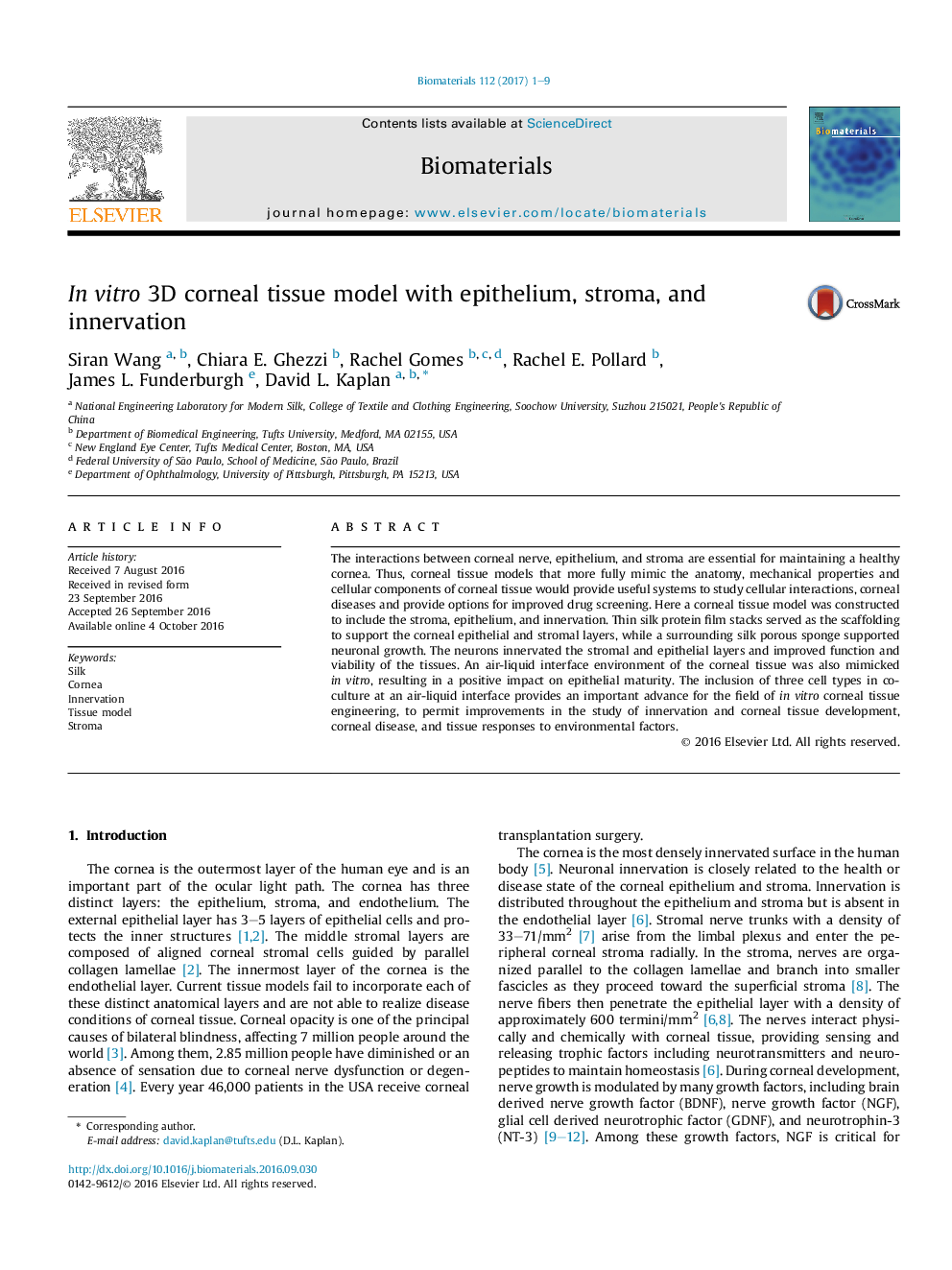| Article ID | Journal | Published Year | Pages | File Type |
|---|---|---|---|---|
| 6450946 | Biomaterials | 2017 | 9 Pages |
The interactions between corneal nerve, epithelium, and stroma are essential for maintaining a healthy cornea. Thus, corneal tissue models that more fully mimic the anatomy, mechanical properties and cellular components of corneal tissue would provide useful systems to study cellular interactions, corneal diseases and provide options for improved drug screening. Here a corneal tissue model was constructed to include the stroma, epithelium, and innervation. Thin silk protein film stacks served as the scaffolding to support the corneal epithelial and stromal layers, while a surrounding silk porous sponge supported neuronal growth. The neurons innervated the stromal and epithelial layers and improved function and viability of the tissues. An air-liquid interface environment of the corneal tissue was also mimicked in vitro, resulting in a positive impact on epithelial maturity. The inclusion of three cell types in co-culture at an air-liquid interface provides an important advance for the field of in vitro corneal tissue engineering, to permit improvements in the study of innervation and corneal tissue development, corneal disease, and tissue responses to environmental factors.
